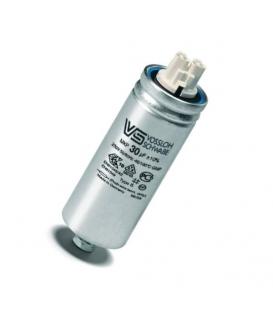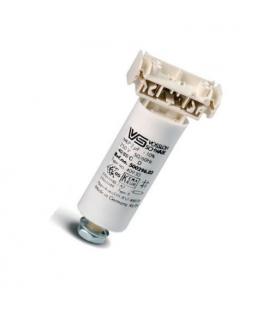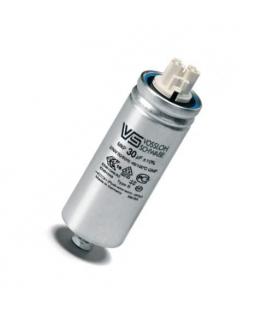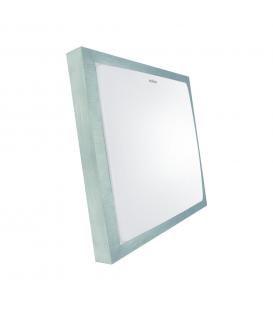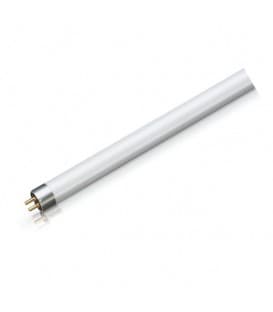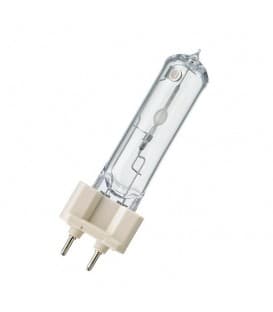Capacitors power factor correction filter harmonic distortions
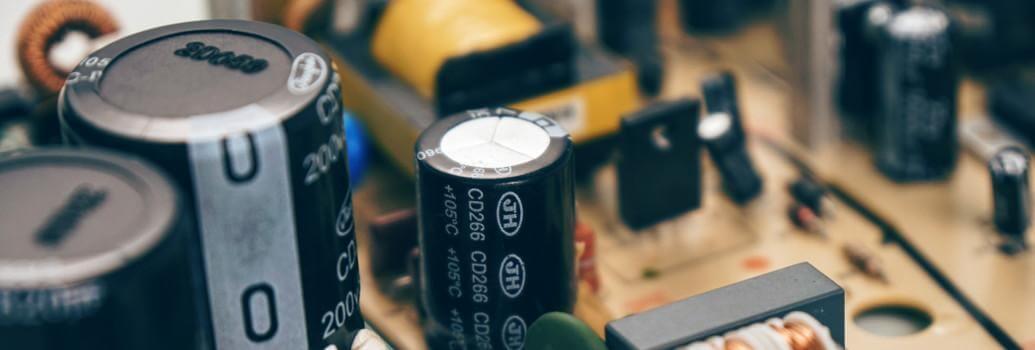
A capacitor is a device that stores electricity in an electric field. It is a passive electronic component with two connections. A capacitor was originally known as a condenser or capacitor. The physical form and structure of capacitors vary widely and there are many types of capacitors in common use. Together with resistors and inductors, they are one of the most basic passive components used in electronic circuits and also in high voltage circuits - phase shift in electric motors.
A capacitor is a passive electronic component that stores an electrical charge.
A capacitor is similar in some ways to a battery. Although they work in completely different ways, both capacitors and batteries store electricity. A capacitor is much simpler than a battery because it cannot produce new electrons, it just stores them. A capacitor is so called because it has the "capacity" to store energy.
Some of the types of capacitors we offer:
- Power factor correction "kosinus π" capacitors for low and high voltage
- Capacitors for filter harmonic distortions at high voltages.
- Capacitors for power electronics
- Capacitors for motor starting and starting
- Paper capacitors
- Electrolytic capacitors
Hermetically sealed, charged capacitors with a contact breaker for overpressure should always be used in critical ambient conditions (high humidity, aggressive atmosphere, high temperatures), when the working load and power supply conditions are unknown, as well as in situations requiring greater attention to safety.
Capacitors have the ability to store and release electric charge, and they are widely used in various electronic and electrical systems, including lamps.
In the context of lamps, capacitors can serve different purposes depending on the type of lamp and its circuitry. Here's a general explanation of how capacitors are used in lamps:
- Power Factor Correction (PFC) Capacitors: Some types of lamps, such as fluorescent lamps and high-intensity discharge (HID) lamps, require a stable and efficient power supply. Power factor correction capacitors are used to improve the power factor of the lamp's circuit. Power factor is a measure of how effectively electrical power is converted into useful work (in this case, light) in a circuit. Capacitors in PFC circuits help to align the current and voltage waveforms, reducing the reactive power and improving the overall efficiency of the lamp.
- Starting and Ignition Capacitors: Certain types of lamps, like fluorescent lamps and metal halide lamps, require a high voltage pulse to initiate the discharge and create light. Starting and ignition capacitors are used to generate these high voltage pulses, which are needed to ignite the lamp's arc. Once the lamp is ignited, the capacitor's role may diminish or become negligible.
- Filtering and Noise Suppression Capacitors: In lamps that are part of electronic ballast circuits (used to regulate the current and voltage supplied to the lamp), capacitors can be used for filtering and noise suppression. They help smooth out fluctuations in the electrical current and voltage, reducing electromagnetic interference (EMI) and ensuring stable lamp operation.
- Energy Storage and Pulse Circuitry: Some specialized lamps, such as strobe lights or flash lamps, use capacitors to store energy and release it in short bursts. The capacitor charges up and then discharges rapidly when triggered, creating a bright and brief burst of light. This principle is used in photography flashes and emergency lighting.
It's important to note that the specific use of capacitors in lamps can vary depending on the type of lamp technology (incandescent, fluorescent, LED, etc.) and the associated control circuitry. Capacitors play a crucial role in improving the performance, efficiency, and reliability of lamps by providing the necessary electrical characteristics required for their operation.
When working with lamps and their associated circuits, it's essential to adhere to safety guidelines and ensure that any capacitor-related modifications or replacements are done by qualified professionals.
Browse our "Capacitors" collection
Capacitors: Power Factor Correction, Filter Harmonic Distortions
- 20,51 €Enhance your electronics with the VS Capacitor 100mF 280 300V. Reliable performance for all your capacitor needs.
- 2,66 €Enhance your electronics with the VS Capacitor 15mF. Reliable performance at 60Hz, 250V for all your capacitor needs....
- 10,33 €Enhance your electronics with the VS Capacitor 32mF. Reliable performance at 250V, this capacitor is a must-have for...
- 2,13 €Enhance your electronics with the VS Capacitor 8mF. Reliable performance at 50-60Hz, this 250V capacitor is a...
- 2,66 €Enhance your electronics with the VS Capacitor 9mF. Reliable performance at 50-60Hz, this 250V capacitor is a...

